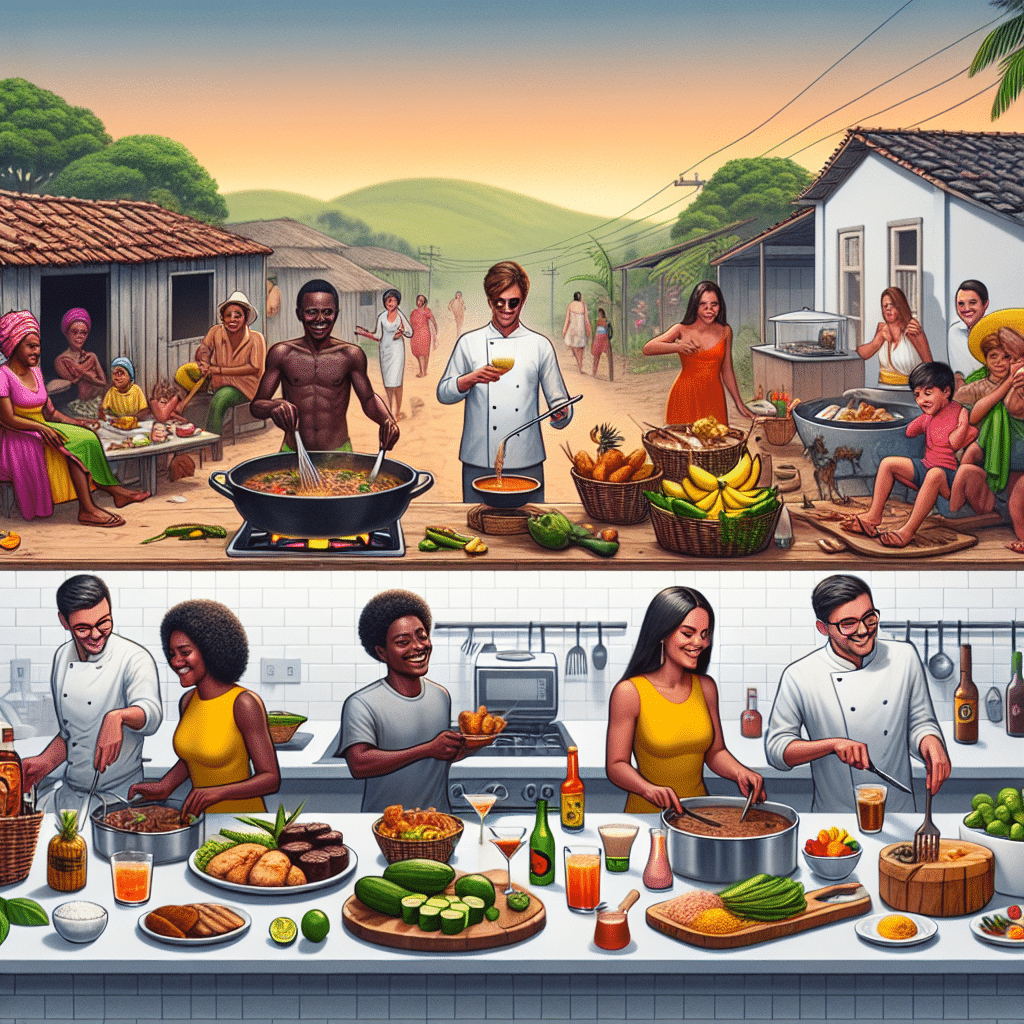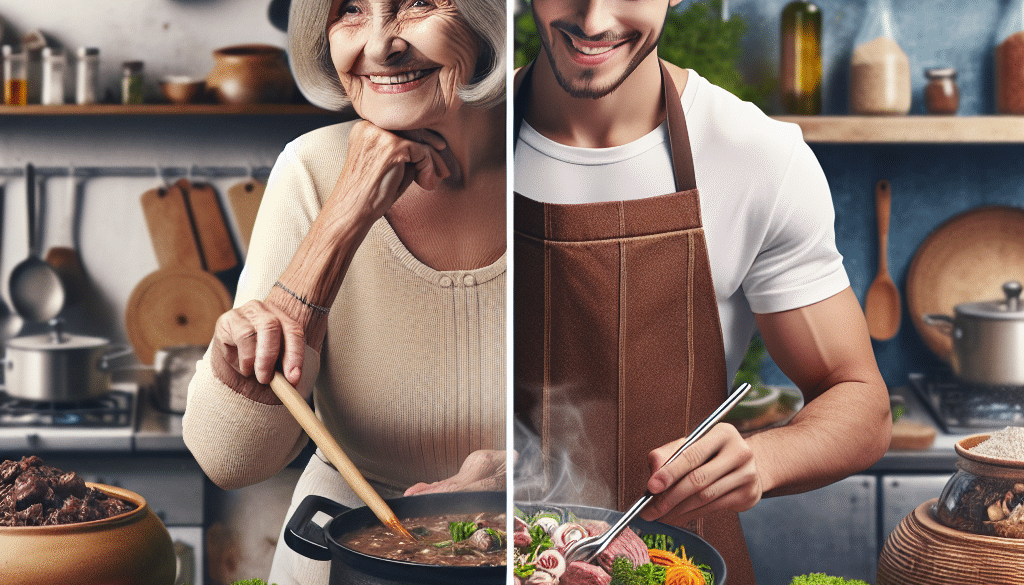Brazilian Tastes: Transition from Traditional to Trendsetting Flavors
-
Table of Contents
- Brazilian Tastes: Embracing Traditional Roots and Trendsetting Flavors
- The Roots of Brazilian Cuisine
- Contemporary Brazilian Cuisine: A Blend of Old and New
- Case Studies: Brazilian Flavors on the World Stage
- Statistics: The Growing Appetite for Brazilian Flavors
- Conclusion: The Future of Brazilian Tastes
- Discover ETChem’s Protein Products
Brazilian Tastes: Embracing Traditional Roots and Trendsetting Flavors

The culinary landscape of Brazil is as diverse and vibrant as its culture, a melting pot of indigenous, African, and European influences. From the Amazonian basin to the bustling streets of São Paulo, Brazilian cuisine has long been celebrated for its traditional flavors. However, in recent years, there has been a significant shift towards innovation and the adoption of trendsetting tastes that are redefining the country’s gastronomic identity. This article explores the evolution of Brazilian tastes from traditional staples to contemporary culinary trends, highlighting the fusion of flavors that make Brazil’s food scene one of the most exciting in the world.
The Roots of Brazilian Cuisine
Understanding the transition in Brazilian tastes requires an appreciation of the country’s culinary foundations. Traditional Brazilian cuisine is characterized by its use of native ingredients and cooking techniques that have been passed down through generations.
- Feijoada: Often considered the national dish, this hearty stew of black beans and pork is a staple in Brazilian households.
- Moqueca: A fragrant fish stew cooked with coconut milk, tomatoes, onions, garlic, and coriander, reflecting the coastal influence on Brazilian cooking.
- Churrasco: The Brazilian barbecue tradition, where various cuts of meat are grilled to perfection, is a testament to the country’s love for beef and communal dining.
- Acarajé: A street food favorite from Bahia, these deep-fried balls made from black-eyed peas are filled with vatapá (a spicy paste) and caruru (okra salad).
These dishes are not only a testament to Brazil’s rich culinary heritage but also provide a canvas for the modern flavors that are now emerging.
Contemporary Brazilian Cuisine: A Blend of Old and New
As Brazilian chefs and food enthusiasts seek to innovate, they are drawing inspiration from traditional recipes while incorporating modern techniques and global influences. This has led to a renaissance in Brazilian cuisine, where old flavors are being reimagined in new and exciting ways.
- Fusion Restaurants: Establishments that blend Brazilian ingredients with international cuisines, creating unique dishes that cater to a global palate.
- Gourmet Twists on Street Food: Classic street foods like pastéis (fried pastries) and coxinhas (chicken croquettes) are being elevated with gourmet fillings and presentation.
- Health-Conscious Eats: With a growing focus on wellness, Brazilian cuisine is seeing an increase in vegetarian and vegan options that utilize fresh, local produce.
- Experimental Cooking: Avant-garde chefs are experimenting with molecular gastronomy and other innovative cooking methods to push the boundaries of traditional Brazilian flavors.
The result is a dynamic food scene that respects its roots while eagerly embracing the future.
Case Studies: Brazilian Flavors on the World Stage
Brazilian chefs and restaurants have gained international acclaim, showcasing the country’s evolving tastes on a global platform. Here are a few examples:
- Alex Atala’s D.O.M.: Chef Atala’s restaurant in São Paulo has been consistently ranked among the world’s best, thanks to his commitment to using Amazonian ingredients in innovative ways.
- Helena Rizzo’s Maní: At her São Paulo restaurant, Chef Rizzo combines traditional Brazilian cooking with contemporary techniques, earning her the title of The World’s Best Female Chef in 2014.
- Rodrigo Oliveira’s Mocotó: Chef Oliveira has been celebrated for his modern approach to northeastern Brazilian cuisine, making it accessible and appealing to a wider audience.
These chefs are just a few examples of how Brazilian cuisine is making its mark on the world, with flavors that are both familiar and surprising.
Statistics: The Growing Appetite for Brazilian Flavors
The popularity of Brazilian cuisine is not just anecdotal; it is backed by data. According to recent studies:
- The Brazilian food and beverage industry has seen consistent growth, with exports reaching $6.5 billion in 2020.
- There has been a significant increase in the number of Brazilian restaurants and food products available globally, indicating a rising demand for Brazilian flavors.
- Surveys show that international consumers are increasingly interested in trying new and exotic flavors, with Brazilian cuisine ranking high on the list of preferences.
This data suggests that the world is eager to explore the rich tapestry of tastes that Brazil has to offer.
Conclusion: The Future of Brazilian Tastes
The transition from traditional to trendsetting flavors in Brazilian cuisine is a testament to the country’s innovative spirit and its ability to adapt and evolve. As Brazilian chefs continue to experiment and push culinary boundaries, we can expect to see even more exciting developments in the years to come. The key takeaways from this exploration of Brazilian tastes are the importance of honoring culinary heritage while embracing change, and the potential for Brazilian flavors to captivate the global food scene.
Discover ETChem’s Protein Products
In the context of Brazil’s evolving food landscape, protein remains a key component of the diet. ETChem’s protein products are perfectly positioned to meet the demands of both traditional and contemporary Brazilian cuisine. Their high-quality collagens can be integrated into a variety of dishes, enhancing both the nutritional value and the culinary experience. Whether it’s for the robust flavors of a feijoada or the delicate balance of a modern fusion dish, ETChem’s protein offerings provide the versatility and quality that today’s discerning consumers expect.
About ETChem:
ETChem, a reputable Chinese Collagen factory manufacturer and supplier, is renowned for producing, stocking, exporting, and delivering the highest quality collagens. They include marine collagen, fish collagen, bovine collagen, chicken collagen, type I collagen, type II collagen and type III collagen etc. Their offerings, characterized by a neutral taste, instant solubility attributes, cater to a diverse range of industries. They serve nutraceutical, pharmaceutical, cosmeceutical, veterinary, as well as food and beverage finished product distributors, traders, and manufacturers across Europe, USA, Canada, Australia, Thailand, Japan, Korea, Brazil, and Chile, among others.
ETChem specialization includes exporting and delivering tailor-made collagen powder and finished collagen nutritional supplements. Their extensive product range covers sectors like Food and Beverage, Sports Nutrition, Weight Management, Dietary Supplements, Health and Wellness Products, ensuring comprehensive solutions to meet all your protein needs.
As a trusted company by leading global food and beverage brands and Fortune 500 companies, ETChem reinforces China’s reputation in the global arena. For more information or to sample their products, please contact them and email karen(at)et-chem.com today.




